Text

A smiling Persephone enthroned in the underworld (the so-called ‘goddess of Tarentum’),
Apulia, Magnia Grecia Southern Italy, c.480 BC
26 notes
·
View notes
Text
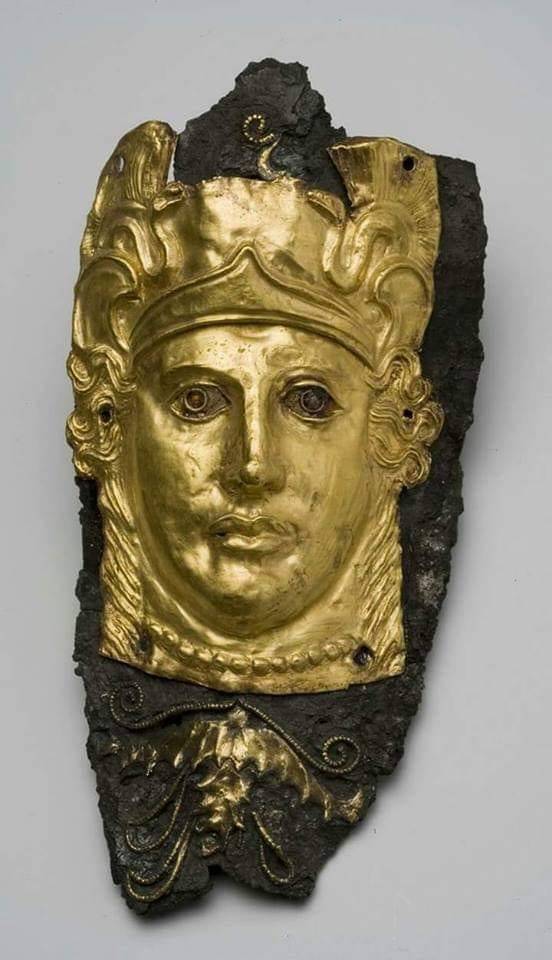
Gold Athena’s Head.
Date: Mid-4th century B.C.
Place of origin: Krasnodar Territory, Taman Peninsula, Black Sea
Archaeological site: Bolshaya Bliznitsa barrow
230 notes
·
View notes
Text


This is a bronze statuette of Artemis, dated to the end of the 4th cent. B.C., which was retrieved from deep waters in the open sea by Mykonos, in May 1959 and since then has been kept in the storerooms of the National Archaeological Museum. This specific statuette was probably dedicated to a sanctuary of the goddess. Its provenance indicates that it was once included in the cargo of a ship, possibly transporting works of art among other things.
265 notes
·
View notes
Text

Queen Cleopatra dressed as a Pharaoh and presented offerings to the goddess Isis, on a limestone stele in Greek dedicated by a man named Onnophris, 51 BC.
Louvre Museum, Paris, France.
12 notes
·
View notes
Text
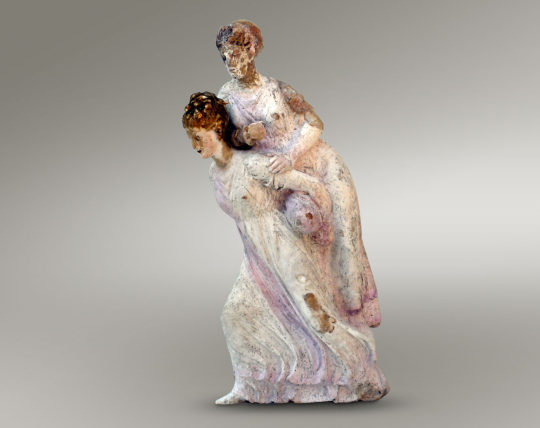
Figurine with “ephedrismos” representation.
This figurine depicts one of the most popular games in ancient Greece, so-called “ephedrismos”, a playground game that is known to this day as “long donkey”, which is similar to ‘leap frog’. The game was played as follows: participants placed a rock at a specific distance, which they tried to hit with a spherical object or another rock. The player to hit the target was the winner. The loser was forced to carry him on his back all the way to where the rock had been placed. Throughout the walk, the loser had to have his hands behind his back and the winner covered the loser’s eyes with his hands so he would not be able to see.
320~270 B.C
Archeological Museum of Corinth ~ Greece.
138 notes
·
View notes
Text

Μarble sphinx
This marble sphinx was placed on a stele erected on the tomb of an eminent Corinthian or Athenian in the Northern Cemetery of Corinth. Sphinxes were daemonic beasts with the head of a woman, the wings of a bird, the body of a lion, and the tail of a snake; they embodied supernatural powers that would scare people of the Archaic period. For that reason, they were used as apotropaic and chthonic figures, connected to the powers of the Underworld. They were often placed on tombs in order to discourage would-be grave robbers. The apotropaic character of the specific monument has been further highlighted by the typical turning of the head towards the onlooker.
Archaeological Museum of Ancient Corinth, c. 550 B.C
169 notes
·
View notes
Text
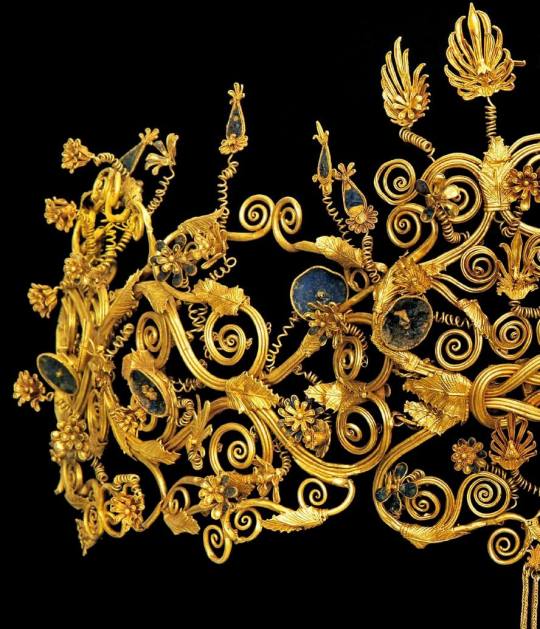
The gold diadem of Meda,
wife of Philip II, who followed the great king in his tomb to the death. Museum of Royal Tombs at Aigai, Macedonia~Greece.
533 notes
·
View notes
Text

Greek gold earring
A Siren, part bird, and part woman playing a kithara.
Height: 4.4 cm. Mid-4th century BC.
The MET Museum.
23 notes
·
View notes
Text

The silver cinerary hydria with the gold oak wreath of young Alexander IV, son of Alexander the Great, 310 BC. Museum of Royal Tombs at Aigai, Macedonia, the Heart of Greece.
730 notes
·
View notes
Text

Sleeping Ariadne (fragment)
Greek, Hellenistic period.
Uffizi Gallery, Florence.
329 notes
·
View notes
Text

Triptolemus, the son of Keleus, king of Eleusis ready to go round the world to teach people the cultivation of cereals In front of him is standing Core (Persephone), the daughter of Demeter.
480 BC, British Museum
#ancient culture#picture of the day#ancient greek art#antiquity#ancient mythology#greece#photooftheday
46 notes
·
View notes
Text
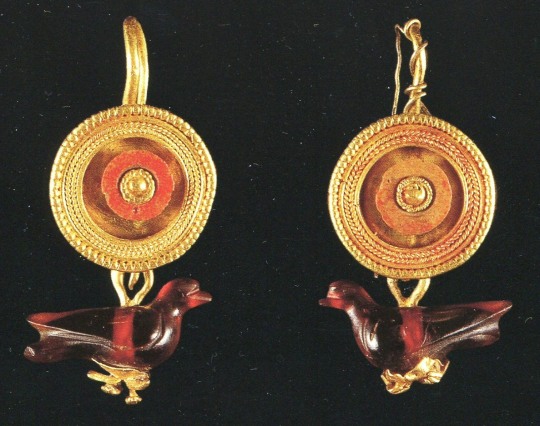
Dove earings
Before they ended up symbolizing the spiritual values in the Christian tradition, doves were the erotic birds par excellence, often accompanying Aphrodite herself. In this respect, it is not farfetched to assume that jewelry with doves were gifts of desire or marriage.
Pair of gold earrings with pending doves of carnelian.
From Apulia in Magna Grecia (modern day Puglia in Italy)
2nd C. BC.
Athens, Benaki Museum
Photo : Benaki, 1997
223 notes
·
View notes
Text

Epinetron or Onos
Ceramic cover for the knees. Used by women in Attica, so that their dress would not be spoiled whilst weaving. Typically offered as a wedding gift in Athens, it was often taken to a woman's own grave.
Epinetron from Eretria, 425-420 BC
Protome of Aphrodite and scenes from the wedding of Alcestis with women decorating votive vases.
By the "Eretria Painter".
Athens, National Archaeological Museum, Vase Collection
421 notes
·
View notes
Text

Etruscan statue of Apollo
Inspired by a statue of Alexander the Great by Lysippos.
Statue of Apollo dated between 310-300 BC was found at the Scasato Temple in Falerii.
It is made of terracotta and it was located in Villa Giulia, outside of Rome.
National Etruscan Museum of Villa Giulia - Rome, Italy
853 notes
·
View notes
Text
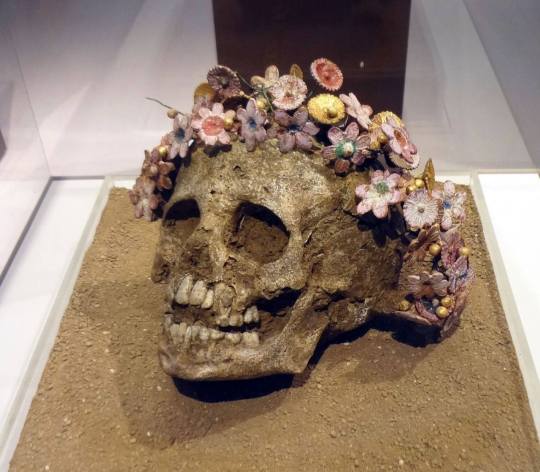
Skull of a girl with a wreath of fruits and myrtle ceramic flowers.
Hellenistic Period (4th~3rd cent. B.C).
Archaeological Museum of Patras, Greece.
43 notes
·
View notes
Text
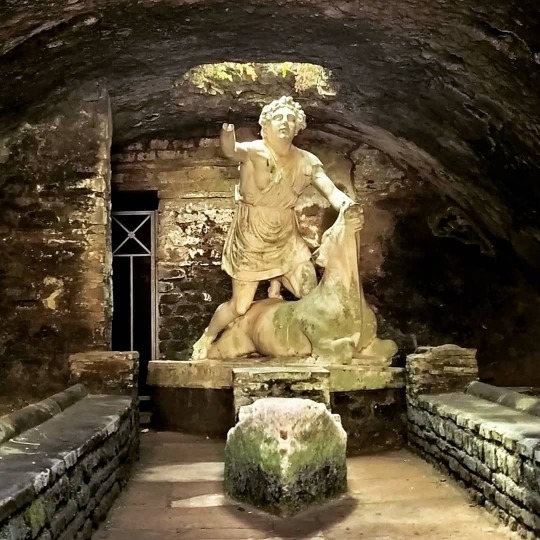
Among the many possible thematic itineraries in the magnificent archaeological park of ancient Ostia, one of the most fascinating explores its mithraea, suggestive evidence of the mystery cult of the God Mithras that was particularly widespread in the Middle and Late Empire.
Photo: Mithraeum of the Baths of Mithras.
86 notes
·
View notes
Text
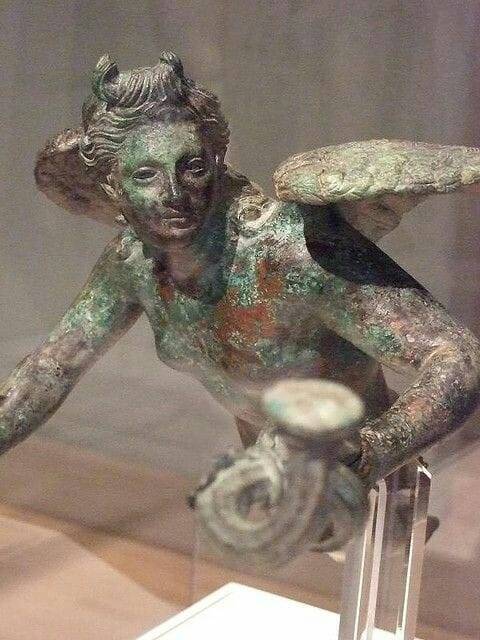
Eros Lamp Holder
Greek perhaps from Asia Minor early 1st century BC Bronze
Photographed at the Dallas Museum of Art in Dallas, Texas.
42 notes
·
View notes